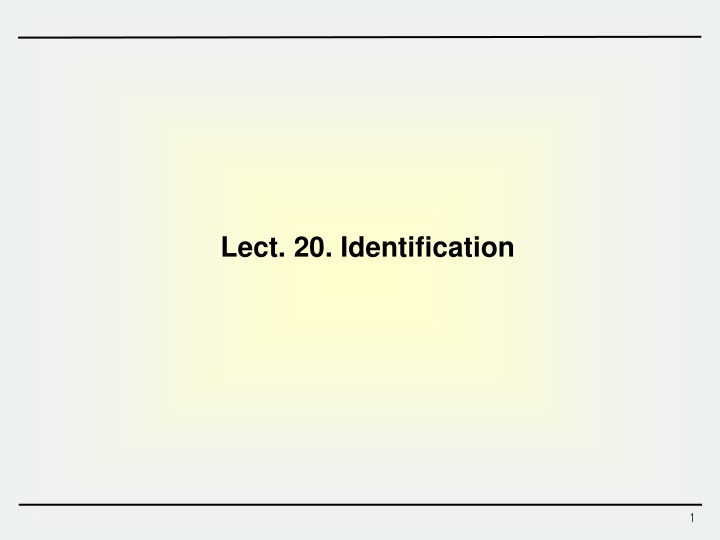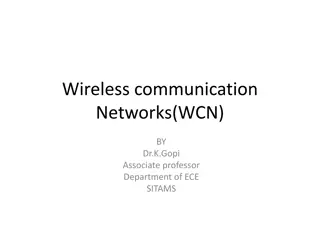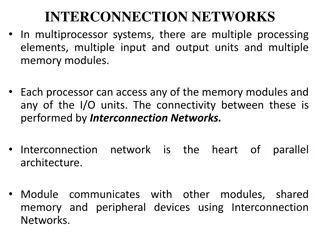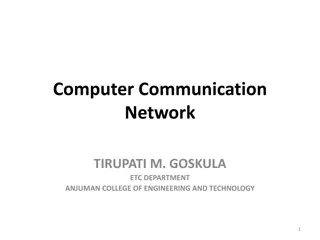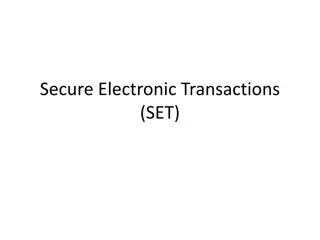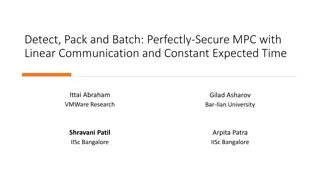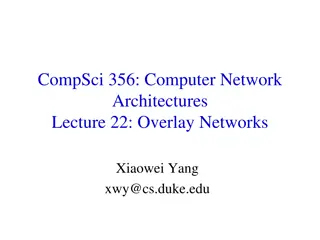Approaches to Secure Identification in Communication Networks
This content discusses various methods and protocols for secure identification and authentication in communication networks. It covers topics such as using passwords, biometrics, cryptographic protocols, and one-time password systems. Different approaches, their reliability, security levels, and costs are explored to ensure entities can authenticate themselves securely over networks.
Download Presentation

Please find below an Image/Link to download the presentation.
The content on the website is provided AS IS for your information and personal use only. It may not be sold, licensed, or shared on other websites without obtaining consent from the author.If you encounter any issues during the download, it is possible that the publisher has removed the file from their server.
You are allowed to download the files provided on this website for personal or commercial use, subject to the condition that they are used lawfully. All files are the property of their respective owners.
The content on the website is provided AS IS for your information and personal use only. It may not be sold, licensed, or shared on other websites without obtaining consent from the author.
E N D
Presentation Transcript
Authentication Entity Authentication (Identification) Over the communication network, one party, Alice, shows to another party, Bob, that she is the real Alice. Authenticate an entity by presenting some identification information Should be secure against various attacks Through an interactive protocols using secret information Message Authentication Show that a message was generated by an entity Using digital signature or MAC 2
Approach for Identification Using Something Known Password, PIN Using Something Possessed IC card, Hardware token Using Something Inherent Biometrics 3
Approach for Identification Method Examples Reliability Security Cost What you Remember (know) Password Telephone # Reg. # M (theft) L (imperso- nation) Cheap M/L What you have Registered Seal Magnetic Card IC Card L (theft) M (imperso- nation) Reason- able M Bio-metric (Fingerprint, Eye, DNA, face, Voice, etc) What you are H (theft) H (Imperso- nation) Expen- sive H 4
Approach for Identification Password-based scheme (weak authentication) crypt passwd under UNIX one-time password Challenge-Response scheme (strong authentication) Symmetric cryptosystem MAC (keyed-hash) function Asymmetric cryptosystem Using Cryptographic Protocols Fiat-Shamir identification protocol Schnorr identification protocol, etc 5
Identification by Password Prover Verifier passwd table passwd, A A A h(passwd) y = h accept passwd n reject Sniffing attack Replay attack - Static password 6
S/Key (One-Time Password System) client Host Hash function f() pass-phrase S Hash function f() pass-phrase S compute f(S), f(f(S)),...., X1,X2,X3, ...,XN store XN+1 Initial Setup 1. login ID 6. compare 2. N 7. store 4. XN 3. compute fN(S) = XN 5. compute f(XN) = XN+1 7
Applications 11
